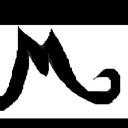Yahoo Answers is shutting down on 4 May 2021 (Eastern Time) and the Yahoo Answers website is now in read-only mode. There will be no changes to other Yahoo properties or services, or your Yahoo account. You can find more information about the Yahoo Answers shutdown and how to download your data on this help page.
Since a wall outlet in the United States of America is 1800 watts can it handle ?
Plugging into two devices both drawing 1500 watts of power. one on top plug and other on bottom plug . Is it a total of 1800 watts no matter what is plugged in.
I have always been curious obviously I am not plugging in that much to find out. I don't want to blow a fuse, breaker or more importantly cause a fire.

11 Answers
- 2 months ago
120V outlets in a residence rated 15 and 20 amp are US standard, and note that a real 20 amp outlet has one vertical and one combination horizontal/vertical slot. A true 20 amp plug will have a vertical, a horizontal, and a ground pin and will not plug into a 15 amp outlet, but it OK for a device with a 15 amp plug to use a 20 amp outlet. If you house/apartment is wired correctly, a 15 amp protected circuit has an outlet with only 2 vertical slots. While this is technically usable with a load that would draw 1800 watts, unless it is a solely protected circuit, that same outlet will be shared with several others, including perhaps the overhead light in the room. So, a TV in the den plugged in, chances are that outlet you want to plug that heater into, is also connected to the TV, the lamp, the phone walwart. A trick for a heavy load, is to get a larger appliance extension cord to reach another rooms outlet, which, hopefully is a different circuit. Older homes with fuse boxes can still be found with all overhead lights in the house on one fuse, and all outlets on another, and it was standard practice that if rooms were individually fused, the main circuit went to the overhead box for the light, and the leads to the outlets, usually one on each wall, came from that box too, so the whole room would go dark if the fuse blew. While millennials and snowflakes rant over environmental concerns, actually the older generations did not use and discard the amount of stuff that is wasted today. A 1200 sq. ft home would have a 60 amp electric service, not 200 or 400 like is common today. An attic fan, and room fans did the cooling, a couple incandescent lamps lit the room, Coke bottles went back to be cleaned and refilled, radios, TV's, toasters, and vacuums you had fixed, not thrown away.
- RitaLv 62 months ago
The typical American wall outlet can handle a maximum of 15 Amps, or 15 amps * 120 Volts = 1800 watts. There are also 20 Amp outlets (which can accept the 15 Amp maximum plugs as well), allowing 2400 watts. However, the National Electric Code (NEC) says that no more than 80% of that should be used.
Source(s): https://vapecorners.com/ - The MasterLv 42 months ago
It can handle anything underneath the power rating of two electric heaters. If you plug two electric heaters into each outlet, the fuse will blow.
- 2 months ago
It depends on what the wall plug is rated for, there are plugs rated for 15, 20, 25 amps but a breaker doesn't blow, it trips. And can be reset.
If you are worried about it, get a tracer and find out in your breaker box what circuits are rated by breaker. Because most modern day stuff actually uses less current, only stuff like heaters, hair dryers , and motors, still use high current.
Take light bulbs, a 150 watt bulb took 150 watts , in cf took 18 watts, now with led is down to around 10 watts??
So a 15 amp circuit can run about one dozen 150 watt standard filament bulbs, but over 150 led bulbs with the same brighness per bulb with current to spare...
- spacemissingLv 72 months ago
The total cannot exceed 1800 watts because that is all the wires can safely carry,
and the circuit breaker will trip if the load goes much over that figure.
Remember:
Volts X Amps = Watts,
and Watts divided by either Amps or Volts will give the other.
Also, "Resistance is not futile --- it is voltage divided by current."
- Anonymous2 months ago
You have to limit yourself to the weakest link in the chain. If your circuit breaker is labeled 15 amps, that gives you a hard total of 1800 watts (15A x 120V) for all the outlets on that circuit combined. i.e., you and your roomie can't both be drying your hair in the bathroom mirror.
- daniel gLv 72 months ago
Math fail no doubt. 1800 watts is just about the max a socket can handle. and the dual as your photo would have to be on a 30 amp service to handle that, Usually 25 amp for these sockets. and 15 amp per socket.
Two devices drawing 1500 watts = 3000 watts, that will blow even a 30 amp circuit breaker.
Appliances like electric stove, cloths drier, even some AC units are wired for 220V. Typical, those are 20 amp service. That can handle your 3000 watts.
- Anonymous2 months ago
You WANT TO BLOW A FUSE. that is "the weakest link"
Fuse-boxes is very old tech.(1940's) You might see it in a shop-garage as they still work and dad isn't always running his power tools.
- UserLv 72 months ago
IMPORTANT:
not all outlets are rated at 1800 Watts (W)
In the U.S.
typical outlets are wired for 10 Amps (A)
which allows a max of 1200 W.
Usually 15A is reserved for sockets expected to be connected to high-power devices, such as kitchen sockets, bathroom sockets, sometimes washing machine socket, refrigerator socket, air conditioner socket, etc.
It depends on the wiring and the fuse or circuit breaker.
Normally the circuit breaker will match the wiring, so it's safe to plug in an 1800W device into a 10A socket (because the breaker will trip or the fuse will blow). That is: it's SAFE, but the device will not work.
Now, in answer to your question:
each device draws CURRENT.
Amps (A) are current.
SO: a 5 A device will draw 5 A.
Two 5 A devices will draw 10 A.
etc.
(The amps drawn by each device ***while it is operating*** are ***additive***.)
Wattage equals Current (A) times Voltage (V)
In the U.S., the voltage standard is 120 V.
So: a 1500 W device draws 12.5 A when it is operating at maximum capacity.
So: an 1800 W device draws 15 A when it is operating at maximum capacity.
Both devices
plugged into the same socket
or even two different sockets that are connected to the same breaker
(i.e. plugged into the same circuit)
will attempt to draw ***27.5*** Amps through that breaker when both are operating at full capacity.
You need to plug the 15 A (1800 W) device in a 15 A socket
and
when you use it
you need to make sure that no other devices in that same circuit are operating.
Similarly with the 12.5 A (1500 W) device. It should be plugged into a 15 A socket, and when in use you should at most have only have a few additional low-power devices operating on that same circuit.
- yLv 72 months ago
That outlet is on a protected circuit and supposedly. The outlets, wire, and breaker are all rated to be on that circuit and work safely. Drawing too many watts, should trip the breaker or blow the fuse. Some trip faster then others so the outlet itself could be damaged, that damage could lead to a fire at some point. At one point, all electrical devices, switches, wires and such, were supposedly manufactured to be able to handle more then they were actually rated, built in safety and such. But over the last two decades, some of the crap that I have found being sold in box stores and hardware stores, appears to be so cheap and flimsy. That I'm not sure that is true anymore.







